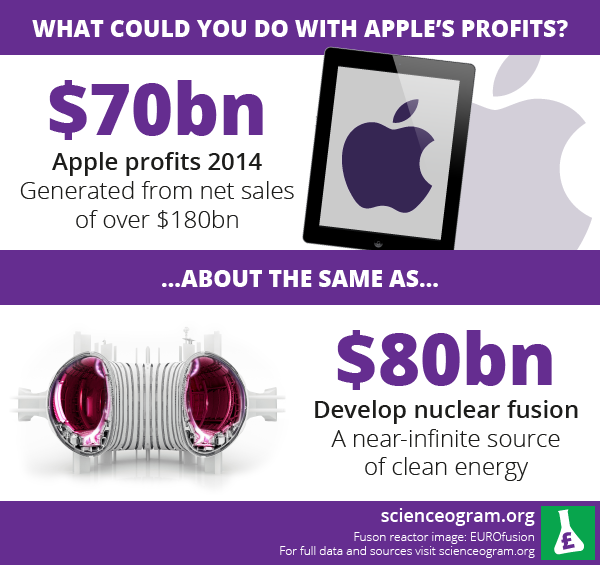Apple’s annual profits could pay for fusion
At Scienceogram, we’re used to looking at massive numbers in the context of government spending. However, this week the most talked-about figure has come from the world of commerce: Apple’s record-breaking profits.

The firm announced that the popularity of the iPhone 6 had contributed to quarterly profits of $18bn, or around £12bn, the largest ever recorded for a public company. If this performance continues, Apple could afford to develop nuclear fusion by the middle of next year. And then do it again in 2017, and again the year after that.
Nuclear fusion is the energy source which powers the Sun and, with further research, could provide an essentially infinite source of carbon-free electricity. Scientists think it would cost around $80bn (£60bn) to go from the experimental reactors we have now to commercially viable power stations. This compares to Apple’s profits in the financial year to September 2014 of just under $70bn (£50bn).
There are, of course, many other worthy scientific projects in energy research and elsewhere that could benefit from this level of investment. Also, there are many other highly profitable public companies: what this comparison really illustrates is that science, compared to many of the figures floating around in the private sector, can be surprisingly cheap.
For a more in-depth analysis of big figures in research and elsewhere, check out our big science page.